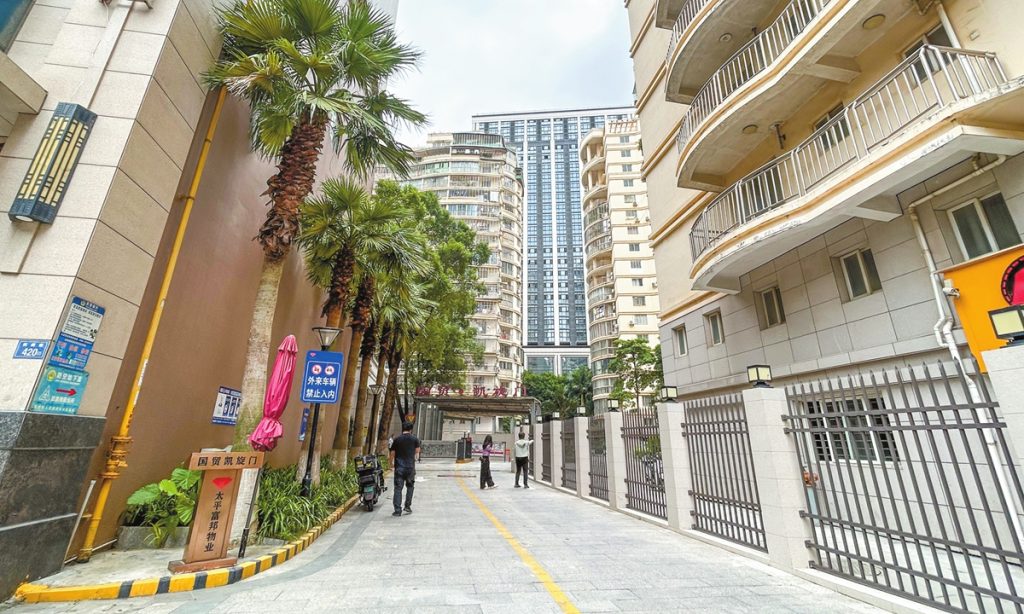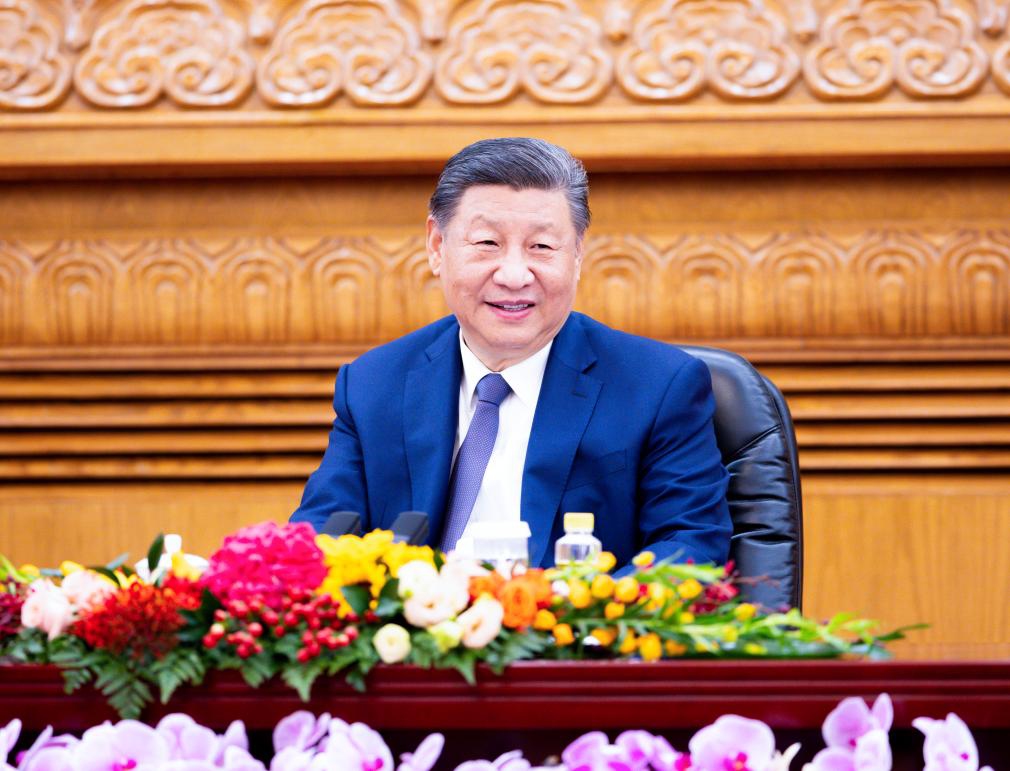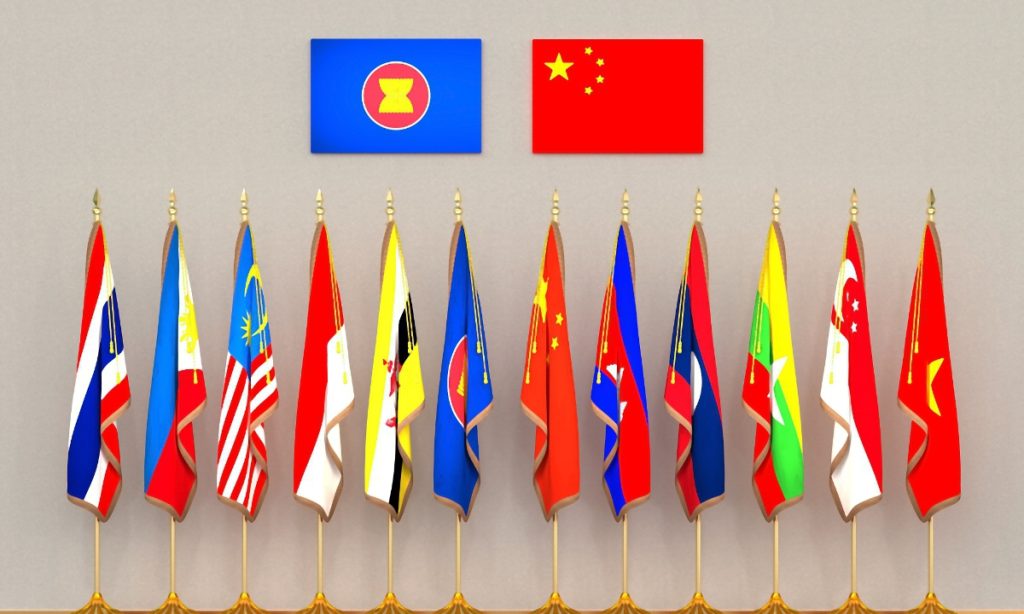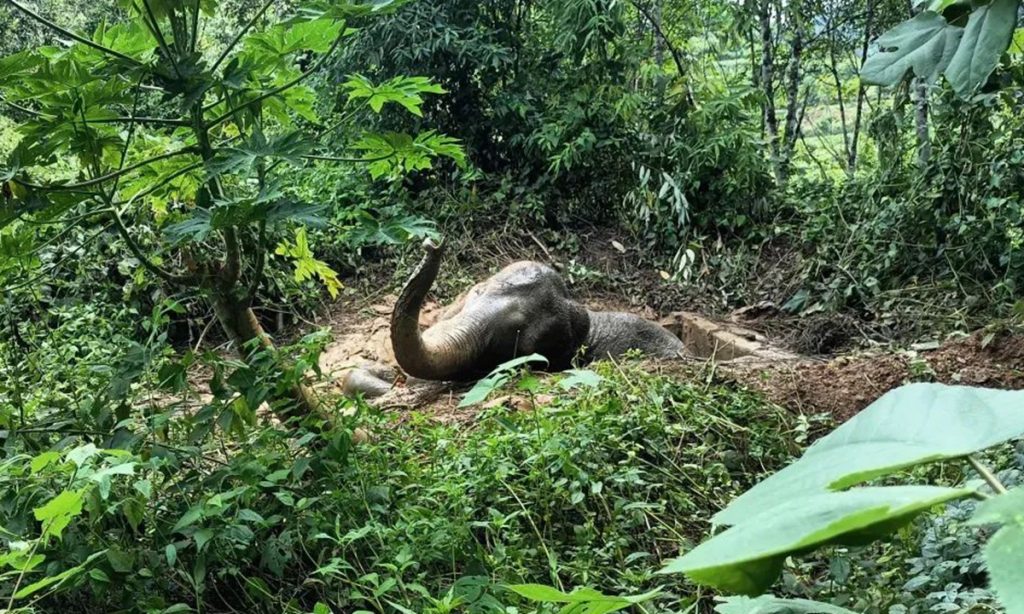Xi, Mongolian President Khurelsukh exchange congratulations on 75th anniversary of diplomatic ties
Xi, Mongolian President Khurelsukh exchange congratulations on 75th anniversary of diplomatic ties
Xi, Mongolian President Khurelsukh exchange congratulations on 75th anniversary of diplomatic ties

Editor's Note:
As this year marks the 75th anniversary of the founding of the People's Republic of China, the Global Times has launched the second volume of its "Wish List" series, which documents ordinary Chinese people's wishes as a window into the changes in and achievements of the Chinese path to modernization.
In this volume, we present five representative stories that capture the aspirations and pursuits of individuals, which reflect the deep connection between national prosperity and people's destinies, illustrating how the Communist Party of China (CPC) and the country prioritize the well-being of the people in their quest for common prosperity, ecological civilization, and social harmony. They also bear witness to how Chinese people have marched forward toward Chinese modernization with high spirits.
This is the third installment of the series. It tells a story of how two residential communities in East China's Fujian Province, with the help of the local government and legislators, utilized the wisdom of whole-process people's democracy to resolve a decade-long neighborhood conflict and live in harmony.
On a day in early October, the Global Times reporter visited two residential communities in Quanzhou city, East China's Fujian Province, where the residents in two compounds once had a decade-long animosity toward each other, due to an ownership dispute on a middle pathway.
However, in Quanzhou, the reporter witnessed the sun shining on the clean and tidy pathway, as residents from both communities warmly greeted each other and engaged in friendly conversations.
It's hard to imagine that a decade ago, these two residential communities had been filled with arguments and insults, leaving the pathway littered with the remnants of their fights: wooden planks, sand, dirty water, and sometimes even feces.
During a fierce quarrel, Chen Jiantong locked a six-meter gate between the communities. Cai Detuan, who lives in the neighboring community, climbed a ladder and smashed the lock. A physical altercation ensued until police arrived and hurriedly separated them.
The disputes lasting 10 years were finally resolved in late 2022, thanks to the efforts of the local government, legislators, and compound residents, who together effectively practiced the concept of whole-process people's democracy to address grass-roots community issues, demonstrating the essence of the people's democracy in China, that is, the people get to discuss their own affairs, to reach the greatest common ground based on the wishes and needs of the entire society.
"We are all very satisfied with the result," Chen told the Global Times downstairs his home. "We had a vivid lesson in whole-process people's democracy and benefited greatly from it."
A decade-long heart knot
At the township-level Fengze subdistrict in downtown Quanzhou, there are two adjacent residential communities that are not enclosed by solid walls. Between them is an approximately 21-meter-long, 7-meter-wide pathway.
The pathway used to be a focal point of conflict between residents of the two neighboring communities, as there was no clear boundary between the two areas due to land designation and construction mistakes. Both sides insisted that the pathway belonged, or at least mostly belonged, to them.
Seventy-year-old Cai is one of the earliest residents there, living in the eastern residential community - a resettlement housing compound constructed in 2010 during the city's urbanization process. Two years later, a high-end residential complex was built to its west in 2012, which had the highest property prices in Quanzhou at that time.
In Cai's memory, this was when all the problems began. The western expensive complex claimed the pathway as their own and locked it. Before that, this pathway was considered as a rightful space of the eastern residential community.
Cai did not hide his past resentment toward his neighbors. "Every time I saw them, I couldn't help but want to say a few harsh words," he said.
Living in the western residential community, non-local Chen felt wronged and angry as well. In 2015, Chen bought a property there, after the developer promised it would be a "gated, high-end residential compound" populated by the affluent. It wasn't until Chen moved in, that he discovered the compound had no solid walls, enabling the "countrymen" of the neighboring community to come and go freely.
"[They] made our compound look less 'decent,'" Chen lamented.
The boundary dispute led to years of grumbles and quarrels. It remained unresolved until in 2021, when candidates for deputies of the district people's congress (also known as the district's legislators) visited the two residential communities to engage with voters. To the candidates, many residents from both sides mentioned their border dispute, and asked for a resolution to this decade-long heart knot.
Lawyer and then candidate Guo Rongfeng took note of their demands. "I give you my word," he said to the residents, "If I were elected, I would definitely try hard to resolve this issue once and for all."
The people get to discuss their own affairs
In November 2021, at the suggestion of Guo and two other newly elected deputies of local district-level people's congress - the legislative body of the district - Fengze subdistrict included the "boundary dispute" case as an annual working project and committed to resolving the issue.
In the past, the local government had repeatedly tried to intervene and resolve the dispute, but each time it had to put it aside because "residents from both communities suspected the government might favor the other side, even when it was not," said Lin Xinzhou, director of the working committee of the standing committee of district-level people's congress at Fengze subdistrict.
One day, when studying the concept of whole-process people's democracy, Lin was attracted by the sentence "the people get to discuss their own affairs." It inspired Lin, who realized that the "border dispute" was a matter concerning the two residential communities themselves, and the involving residents would be more appropriate than the government and the people's congress to take the lead.
"We could encourage the residents to discuss and solve the problem themselves," Lin told the Global Times. "Our role is to provide a platform for democratic consultation and decision-making, along with the help the residents need."
The whole-process people's democracy, which encompasses law-based democratic elections, consultations, decision-making, management, and oversight, became a key to solving this issue. In the early spring of 2022, with the assistance of local government and deputies to the district people's congress, the two residential communities respectively, for the first time, held their house-owner meetings, where all residents voted for their inaugural homeowners' committee.
The two seven-member committees later served as the main body for democratic consultation on this matter. Chen was elected as the head of the homeowners' committee for the western commercial residential complex. And Cai became a member of the homeowners' committee for the eastern resettlement housing community.
The two individuals, who had previously clashed fiercely over the interests of their respective communities, began to sit down calmly in their new roles to engage in consultation on behalf of their neighborhoods.
Over the following seven months, the two homeowners' committees had dozens of discussions and negotiations regarding to various matters. In most cases, deputies for the district people's congress like Lin and Guo were present on-site. But instead of directly participating in the negotiations, they stayed on the sidelines, providing legal and policy advice and sometimes mediating quarrels.
Once during a heated argument at a negotiation, Guo shared with the residents an ancient Chinese story of "Liu Chi Xiang (literally an approximately 2-meter-wide alley)," which tells of two neighbors who moved their respective walls about one meter back for each other, resulting in friendly neighborhood relations.
Finally, later in 2022, a draft of the "boundary dispute settlement agreement" was completed. The resettlement community agreed to give most part of the pathway to the commercial housing community, and to erect a railing wall on the pathway to formally separate the two compounds. In exchange, the commercial housing community granted another piece of shared to the former.
The following steps then went much more smoothly: the two sides publicly announced the draft agreement, respectively held house-owner meetings again, and invited all the residents to vote to approve or reject it. In the end, over 90 percent of residents voted in support, bringing a decade-long neighborhood dispute to a close.
Cai and Chen shook hands in reconciliation after the agreement was approved. "We were very pleased with this result," they told the Global Times.
A vivid example in grass-roots governance
The happy ending of the pathway ownership solution, now widely known as a "Liu Chi Xiang case in the new era" in Quanzhou, becomes a vivid example of the whole-process people's democracy being practiced at the grass-roots level.
"For us, the community environment has improved, neighborly relationships have become harmonious, and our sense of happiness and fulfillment has increased," Chen told the Global Times.
Inspired by whole-process people's democracy, Fengze subdistrict has addressed several grass-roots issues, including the renovation of a dilapidated building and the revitalization of an aging residential community. In May 2013, a district-level practice base for whole-process people's democracy was built there, the first of its kind in Fujian Province.
Today there are tens of thousands of practice bases for whole-process people's democracy at different levels throughout China. These bases serve as a testament to the deepening of people's democracy at the grass-roots level. They reflect public sentiment and opinions, while also gathering the wisdom and collective will of the people.
The concept of the whole-process people's democracy first came to light in 2019, when Chinese President Xi Jinping pointed out that Chinese people's democracy is a type of "whole-process democracy," during his inspection tour in Shanghai.
The essence of the people's democracy is that people get to discuss their own affairs, to reach the greatest common ground based on the wishes and needs of the entire society, Xi said.
In contrast to the Western model, where democracy and elections are frequently equated, the people's democracy allows people to discuss their own affairs to reach the greatest common ground. As a result, it has not only gained deep resonance among the Chinese people, but also is being appreciated by more countries globally.
In 2023, the Academy of Contemporary China and World Studies conducted a survey in 23 countries across five continents on practice and modern development of democracy in China. Results showed that the value and practice of whole-process people's democracy has won widespread plaudits throughout the international community.
Whole-process people's democracy is the defining feature of socialist democracy; it is democracy in its broadest, most genuine, and most effective form.
Walking on the clean and tidy pathway in the middle of the two communities, seeing smiles on the residents' faces, Lin told the Global Times that the pathway has now not only connected the hearts of the two sides, but has also brought together the practice of whole-process people's democracy, with the voices of grass-roots Chinese residents, as well as their most simple wish for neighborhood harmony.

Chinese President Xi Jinping met with foreign guests attending the China International Friendship Conference and conference marking the 70th founding anniversary of the Chinese People's Association for Friendship with Foreign Countries (CPAFFC) here on Friday.
Xi had a group photo taken with the foreign guests and spoke highly of the long-term dedication of international friends to cementing friendship with China.
He pointed out that people-to-people friendship is the foundation for stable and long-term international relations and an unremitting driving force for promoting world peace and development. Over the past 75 years since the founding of the People's Republic of China, the Communist Party of China (CPC) has united and led the Chinese people in blazing a path of modernization that has not only developed the country itself but also benefited the world, he said.
Xi said that looking back on the journey, China's achievements in various fields would not have been realized without the support of people from other countries. Numerous international friends have shared weal and woe with the Chinese people. Numerous foreign enterprises, institutions and individuals have actively participated in advancing China's socialist modernization, thus achieving mutual benefits and making important contributions to promoting friendly exchanges and cooperation between China and other countries, he added.
"We will always remember your important contributions to China and the sincere friendship that has been developed with the Chinese people," said Xi.
Stressing that the world is once again at a crossroads in history, Xi said that in the face of changes unseen in a century, building a community with a shared future for humanity is the right way forward for people of all countries.
China is willing to strengthen friendly exchanges with friends from all other countries, give play to the unique role of people-to-people diplomacy, and strive to build a community with a shared future for humanity, said Xi.
"First, embracing the spirit of 'shared responsibility as dwellers of the same planet,' we must build a broad consensus on creating a community with a shared future for humanity," Xi said. "We should promote humanity's common values of peace, development, fairness, justice, democracy and freedom, advocate an equal and orderly multi-polar world and an inclusive economic globalization that benefits all, and make the planet Earth a peaceful, friendly and harmonious home for all."
"Secondly, guided by the principle of win-win cooperation, we should strengthen synergy in building a community with a shared future for humanity," Xi said. China does not pursue self-centered modernization, and welcomes more foreign friends to actively participate in China's modernization process. The country is committed to providing new opportunities for global development with its achievements in modernization, and promoting a global modernization that features peaceful development, mutually beneficial cooperation and common prosperity to better benefit people of all countries.
"Thirdly, with an open and inclusive mindset, we should embrace all civilizations to build a community with a shared future for humanity," Xi said. Noting that the Chinese nation has always been open and inclusive and the Chinese people are kind and friendly, he said China is willing to work with all parties to advance the Global Civilization Initiative and deepen understanding and friendship through sincere dialogue in order to replace estrangement with exchanges and clashes with mutual learning.
Xi emphasized that the CPC serves the people, the Chinese government belongs to the people, and China's diplomacy represents the people. The Chinese government will continue to support the CPAFFC in playing its unique role in developing international friendship and promoting practical cooperation.
Former Nigerian President Olusegun Obasanjo, former President of the National Assembly of Thailand Bhokin Bhalakula, and Elyn MacInnis, the founder of "Friends of Kuliang," spoke at the conference.
They extended warm congratulations on the 75th anniversary of the founding of the People's Republic of China and praised the unique role of the CPAFFC in promoting people-to-people diplomacy and fostering greater understanding and friendship among people from different countries.
According to the speakers, under the leadership of President Xi, China has successfully eradicated absolute poverty and achieved rapid development, becoming a beacon of hope for developing countries. President Xi's proposal to build a community with a shared future for humanity and initiatives such as the Belt and Road Initiative demonstrate far-sightedness, vision and a sense of responsibility toward global governance. Xi's proposal and initiatives have pointed the way for close cooperation and mutual benefit among countries, and China's development and prosperity will continue to benefit the world.
Approximately 200 people attended the event, including former political leaders from various countries, members of royal families, heads of international friendship organizations, and international friends of China.
Senior Chinese officials Cai Qi, Han Zheng and Wang Yi were present.

On Monday, the People's Liberation Army (PLA) Eastern Theater Command is dispatching its troops of army, navy, air force and rocket force to conduct joint military drills code-named Joint Sword-2024B in the Taiwan Straits and areas to the north, south and east of Taiwan island. The drill serves as a stern warning to the separatist acts of "Taiwan Independence" forces, Senior Captain Li Xi, spokesperson of the PLA Eastern Theater Command, said in a statement released early Monday morning.
With vessels and aircraft approaching Taiwan island in close proximity from different directions, troops of multiple services engage in joint drills, focusing on subjects of sea-air combat-readiness patrol, blockade on key ports and areas, assault on maritime and ground targets, as well as joint seizure of comprehensive superiority, so as to test the joint operations capabilities of the theater command's troops, Li said.
The drill serves as a stern warning to the separatist acts of "Taiwan Independence" forces. It is a legitimate and necessary operation for safeguarding state sovereignty and national unity, said the spokesperson.
The scope of deterrence in the Monday exercise has expanded, and the exercise is moving closer to the island of Taiwan in comparison to the previous ones, especially with China Coast Guard vessels conducting patrol and control operations around the island, achieving successive new breakthroughs, Zhang Chi, a professor at the PLA National Defense University, told the Global Times on Monday.
On Monday, China Coast Guard (CCG) fleets 2901, 1305, 1303, and 2102 conducted law-enforcement patrols in the waters surrounding the Taiwan island, implementing patrol and control operations around the island. This is a concrete action to manage the Taiwan island in accordance with the one-China principle, CCG spokesperson Liu Dejun said in a statement.
Zhang said that the Monday exercise, with overwhelming force and strategic depth, has significantly squeezed the Taiwan military's "defense and operational space."
The PLA's naval and air forces, along with CCG, are advancing toward the Taiwan island from multiple directions, enforcing a complete blockade of the island. It is as if a sharp sword is piercing through the Taiwan authorities' so-called "defense space," drawing ever nearer to the island, fully showcasing the PLA's joint operational capabilities across multiple operational domains around Taiwan island, Zhang said.
Upon further analysis of the designated areas for this exercise, Zhang said the PLA has established six zones: two in the Taiwan Straits, two to the east of the island, one in the north, and one in the south. Zhang noted that the drills in the northern sea and airspace serve as a direct warning to the leading figures of 'Taiwan independence," specifically targeting Lai authorities. Meanwhile, the exercises in the southern sea and airspace are designed to send a warning to the main strongholds of the "Taiwan independence" forces.
Compared to previous PLA's exercises around the Taiwan island in recent years, the deterrence scope of the current drill has expanded significantly, and the location of the drill is moving closer to the island. In response to the provocations by the "Taiwan independence" separatist forces in collusion with external powers, who employ a "salami slicing" strategy, the PLA has developed a proactive counter posture to deal with these challenges, said Zhang.
Soon after Lai's separatist inaugural speech on May 20, the PLA Eastern Theater Command held the Joint Sword-2024A exercises in the Taiwan Straits, the north, south and east of the Taiwan island, as well as areas around the islands of Kinmen, Matsu, Wuqiu, and Dongyin from May 23 to 24.
The PLA's Joint Sword-2024B exercise sends a clear message: The more aggressively "Taiwan independence" separatists push their agenda, the greater the countermeasure they will face. This also delivers a strong signal of firm opposition to "Taiwan independence" and a steadfast commitment to safeguarding national reunification, dispelling the illusion among separatist forces that the mainland will refrain from taking military action, Wang Wenjuan, an expert from the PLA Academy of Military Science, told the Global Times.
Wang said that the exercise also showcases the Chinese military's unyielding spirit, high-level preparedness, and strong combat capabilities. "Like a sword hanging overhead or a hammer poised to strike at any moment, it forces the Lai authorities to feel the deterrence of war firsthand, delivering a clear message in a language they understand — that secession means war," said Wang.
Wang noted that this exercise will show Lai and the "Taiwan independence" separatist forces mainland's determination and confidence to defend national unity and territorial integrity.
The decision to conduct military exercises is solely within a nation's sovereign rights, experts said.
As outlined in the 1949 Draft Declaration on the Rights and Duties of States by the United Nations, each state has the right to manage its internal and external affairs according to its own discretion, without outside interference, coercion, or directives. Consequently, a state has the legitimate right to govern the development and deployment of its armed forces through its domestic laws, Zheng Hong, a research fellow from PLA Naval Research Academy, told the Global Times on Monday.
Zheng noted that China's Constitution states that Taiwan is an inseparable part of China and the PLA's role is to strengthen national defense, protect the motherland, and resist external aggression. China's National Security Law stipulates that the state shall take all necessary defense and control measures to safeguard national territorial sovereignty and maritime rights, and to prevent armed subversion and secession.
The National Defense Law of China specifies that one of PLA's core missions is to defend the country's sovereignty and territorial integrity. The Anti-Secession Law stipulates that the "Taiwan independence" forces are prohibited from separating Taiwan from China under any name or in any way, said Zheng.
These legal provisions, whether in international law or Chinese domestic law, provide the legal basis for the PLA to carry out exercises on the country's territory and in its jurisdictional waters to effectively fulfill its mission, Zheng said.
The PLA requires no so-called "excuses" to conduct exercises, as it strictly adheres to domestic laws when fulfilling its duties. In response to Lai's provocative actions in pursuit of "Taiwan independence," the PLA is obliged to take firm, decisive measures to punish and deter such moves. "The greater the provocation, the stronger the response."

China and ASEAN announced the substantial conclusion of the Version 3.0 China-ASEAN Free Trade Area (FTA) negotiations during the 27th China-ASEAN Summit, China's Ministry of Commerce (MOFCOM) said on Thursday.
The upgrades in the FTA will enhance cooperation in emerging fields, align standards and regulations, and promote trade facilitation and inclusive development for both sides, MOFCOM said.
The conclusion of the negotiations demonstrates both sides' unwavering resolve to maintain a rules-based trading environment and accelerate post-pandemic economic recovery by deepening and broadening economic integration and cooperation amid a complex global environment, MOFCOM said.
The negotiations on Version 3.0 of the China-ASEAN FTA started in November 2022.
Version 3.0 will deepen cooperation in areas including digital economy, green economy, supply chain connectivity, competition and consumer protection, and for micro, small and medium-sized enterprises.
These upgrades will comprehensively expand mutually beneficial cooperation between China and ASEAN in emerging fields, strengthen the integration of standards and regulations, and promote trade facilitation and inclusive development, MOFCOM said.
Both sides aim to complete the legal reviews and domestic procedures to facilitate the signing of the upgrade protocol in 2025, MOFCOM said.
The FTA's first upgrade was signed in 2015 and entered into force in 2019, with improvements regarding rules of origin, customs procedures and trade facilitation, investment, and economic and technical cooperation, as well as market access for services, CCTV reported.
In the first eight months of this year, trade between China and ASEAN reached 4.5 trillion yuan ($638 billion), marking a year-on-year increase of 10 percent and accounting for 15.7 percent of China's total foreign trade during the period. ASEAN has solidified its position as China's largest trading partner, according to customs data.

The EU's planned tariff hike on Chinese electric vehicles (EVs) faced a widespread backlash over the weekend. Chinese experts said on Monday that this move won't halt the robust growth of the Chinese EV industry on the global stage, but it could ultimately stifle technological innovations in Europe.
"The European Commission's proposal to impose definitive countervailing duties on imports of battery electric vehicles (BEVs) from China has obtained the necessary support from EU Member States for the adoption of tariffs," the EU said in a statement on Friday.
Major European automakers, including Volkswagen, BMW and Mercedes-Benz, have said that imposing tariffs on Chinese EVs is a mistaken approach and sends a fatal signal to the European automotive industry. Volkswagen CEO Oliver Blume has suggested credit for investments instead of punitive tariffs.
"Instead of punitive tariffs, this should be about mutually giving credit for investments," Blume recently said in an interview with German media outlet Bild am Sonntag.
The China Chamber of Commerce to the EU on Friday expressed deep disappointment and strong dissatisfaction with the EU's adoption of protectionist trade measures.
The chamber strongly suggests the EU to approach the final measures with caution, delay the implementation of tariffs, and prioritize resolving disputes and trade tensions through consultations and dialogue, according to an announcement sent to the Global Times.
Chinese experts said that the EU's move is a typical case of trade protectionism that uses political tools to meddle in economic activities, which in the long term will hinder the bloc's industrial growth and stifle its technological innovations.
The bloc's move contradicts the principles of global market dynamics and disrupts the economic order. Such measures not only hurt both sides - China and Europe - but also threaten the stability of global supply chains, Jian Junbo, a deputy director of the Center for China-Europe Relations at Fudan University's Institute of International Studies, told the Global Times on Monday.
China's EV industry has gained a significant advantage globally, and if Europe resorts to raising tariffs to isolate itself from this competitive technology, it risks missing a critical opportunity for growth, Jian said.
China's EV industry adheres to market principles and emphasizes robust competition, a spokesperson for China's Commerce Ministry said on Friday.
The EU's protectionist actions seriously violate World Trade Organization rules and disrupt normal international trade. Such measures not only obstruct trade and investment cooperation between China and Europe but also delay the EU's green transition and affect global efforts to combat climate change, the spokesperson noted.

As the Israeli-Palestinian conflict has stretched on for a year, the conflict has spread further in the Middle East to countries including Lebanon, Yemen, Iran and Syria, with tens of thousands of people killed. The international community has tried to prevent the escalation of the conflict but to no avail, and now worries are growing over a full-scale war in the Middle East, analysts said.
The worsening situation in the region has been one of the hottest topics in the UN in the past one year. The General Debate of the 79th session of the United Nations General Assembly (UNGA) concluded on September 30, with UNGA President Philemon Yang calling on Israel, Hamas and Hezbollah to urgently conclude a ceasefire.
The UN Security Council (UNSC) has also held many meetings since the outbreak of the conflict last year, but failed to stop the crisis from escalating, and observers said the key reason is that the major powers that are capable of stopping the war cannot reach consensus, as the US has used its veto power to stand against other members from adopting a resolution of immediate and sustainable cease-fire, and its one-sided support to Israel has allowed the later to continue and expand its operations in the region and seriously undermine the UN mechanism to safeguard peace.
On Monday, the Israeli military announced that it conducted strikes on Hamas targets across the Gaza Strip to mark the anniversary of the October 7 attacks. Meanwhile, southern Beirut experienced significant explosions for another night as Israeli forces continued their bombardment of the Lebanese capital. Additionally, at least 10 individuals were injured in Haifa, Israel, due to a rocket attack from Hezbollah, Al Jazeera reported.
The conflicts are causing heavy casualties almost every day. According to data released by the Gaza Ministry of Health on Sunday, in past 24 hours, the Israeli military operation has caused 45 deaths. Since October 7, 2023, over 40,000 people have been killed.
Lebanese people are now also becoming the victims of the war. According to the International Organization for Migration under the UN, in September 2024, large-scale cross-border attacks escalated in Lebanon, causing over 1,000 deaths and 6,352 injuries in less than two weeks. This brings the total to more than 1,800 killed and 9,100 injured since October 2023. The casualties include civilians, healthcare workers and humanitarian staff.
Israel's military operations have also triggered responses from other countries. Iran launched approximately 180 missiles at Israeli targets on October 1, claiming it was in response to Israel's alleged assassinations of several high-profile figures, including Hamas and Hezbollah leaders, and a senior Iranian military commander. Israel also claimed that it will strike back with Iran said it will return with harsh and destructive response if Israel takes any further action to attack Iran.
"The possibility of a full-scale war in the Middle East exists, but the chances have not dramatically increased, as countries involved are all unwilling to see the situation spiral out of control, and they have taken actions from their own interests and perspectives to maintain stability and prevent escalation," Gong Xiaosheng, a former special envoy of the Chinese government on Middle East issue, told the media in a recent interview. "For regional countries like Lebanon, Syria, and Egypt, there is a strong reluctance to get involved in the conflict; and for Israel, the sooner it can resolve this conflict, the better it will be for Israel's national interests and its people."
It is hard to say whether Israel will further escalate the war on a larger scale, Gong said, as such actions do not align with Israel's interests and would exceed its military capabilities. Especially with the US in the midst of presidential election, going too far on this issue would not be in line with American interests either.
The Israeli-Palestinian negotiations are currently at a stalemate, and there is very little room for maneuvering based on the points of contention between the two sides. Ultimately, Israel is not likely to compromise on the condition of releasing all hostages, but the methods and timing of their release can be negotiated, Gong suggested.
Wang Jin, an associate professor at the Institute of Middle Eastern Studies at Northwest University in Xi'an, told the Global Times the conflicts in the region could stretch further, because there is no clear, feasible and reliable peaceful solution at this moment. Maybe Israel can maintain its military advantages and strike its neighbors as frequent as it wants given the support from the US, but a completely secure and safe environment requires something else, Wang said.
Escalation hard to prevent
In the past one year, members of the international community, including China, have paid a lot of efforts for peace. Following the historic handshake between Saudi Arabia and Iran in Beijing in 2023, another epoch-making event, the signing of the Beijing Declaration by 14 Palestinian factions on ending division and strengthening unity, seems to affirm China's role as a "peacemaker." Experts said this will contribute to not only the internal peace of Palestine but also the future peaceful solution of the Palestine-Israel issue.
The US has also tried to mediate the conflict, but it prefers to do so through the mechanism dominated by itself, and this approach has failed to win trust from groups like Hamas and Hezbollah, as the US is not a fair mediator, experts said.
Although regional countries and other members of the UNGA and UNSC have called for peace and concrete efforts in humanitarian aids and conflict mediation, the problematic role played by Washington has undermined these efforts, said Liu Zhongmin, a professor at the Middle East Studies Institute of Shanghai International Studies University.
According to Reuters, the US on February 20 again vetoed a draft UNSC resolution, blocking a demand for an immediate humanitarian ceasefire as it instead pushes the 15-member body to call for a temporary ceasefire linked to the release of hostages held by Hamas.
Thirteen council members voted in favor of the Algerian-drafted text, while Britain abstained. This was the third US veto of a draft resolution since the start of the latest round of Palestine-Israel conflict. Washington also used its veto to block an amendment to draft resolution in December.
Li Zhenjie, an associate research fellow at the Institute for studies on the Mediterranean Rim at Zhejiang International Studies University, told the Global Times that now the crisis is not only in the Gaza Strip, but has spread into multiple "eyes of storm" in Israel-Lebanon border areas, the Red Sea, Iran and Syria. This has increased the difficulty of conflict mediation.
The US decision to veto has paralyzed the UN's function to stop the conflict, and there is no mechanism that can effectively prevent Washington from abusing its power, Li noted.
"The 'sunk cost' of immediately stopping the war is becoming greater day after day for Israel. The Israeli government knows that if the situation goes out of control, the US will be forced to intervene," Li said. "Therefore, for the Israeli government, there is nothing to be worried about, and it's already immune to criticism and protests worldwide against it."
The current situation proves that the US-dominated "rule-based international order" actually played by no rules but is only based on the interests of US hegemony, experts said.

Chinese experts said on Monday that India should not perceive China as a rival for its military development, after the chief of the Indian Air Force claimed ahead of the Indian Air Force Day on Tuesday that China is outpacing India in technology, defense production and infrastructure.
India "lags behind" China in military technology and "is way behind" in defense production, the Times of India quoted Indian Air Chief Marshal AP Singh as saying on Friday in a run-up to the Indian Air Force Day.
Singh said that with China "steadily eroding" India's air combat advantage along the frontier by deploying a greater number of aircraft, his force is also upgrading its forward airbases and advance landing grounds. At the same time, he is asking Hindustan Aeronautics Limited for faster delivery of indigenous Tejas fighters and the private sector to play a much bigger role in defense production.
In a separate report on Monday, India Today said that the Indian Air Force demonstrated its ability to "shoot down Chinese spy balloon-type objects" in a controlled exercise a few months ago using a Rafale fighter jet under the Eastern Air Command's area of responsibility.
The exercise comes against the backdrop of growing concerns over Chinese surveillance activities using similar high-altitude balloons, the India Today report claimed.
The Indian Air Force is sensationalizing China's reasonable and legitimate national defense development, using China as an excuse to gather more funding and put more pressure on India's domestic defense industry, a Chinese military expert who requested anonymity told the Global Times on Monday.
Many of India's indigenous defense projects have been facing challenges including long development cycles, slow production rates and high costs, the expert said
The current situation along the China-India border is generally stable, and the hype by the Indian Air Force is not conducive to the improving bilateral ties, the expert said.
China and India held in Beijing on August 29 the 31st Meeting of Working Mechanism for Consultation and Coordination on China-India Border Affairs, where the two sides agreed to work together to turn the page on the border situation at an early date, according to a press release by the Chinese Foreign Ministry on the same day.
India has the right to develop its national defense, including its independent defense industry, but such development should not be based on perceiving China as a rival, as China does not have the intention to engage in an arms race with India, observers said.

Shandong Taishan midfielder Valeri Qazaishvili (right) scores against Central Coast Mariners of Australia during their AFC Champions League Elite League Stage first-round match in Jinan, East China's Shandong Province on September 17, 2024. The Chinese team won 3-1. Photo: VCG

A wild Asian elephant was rescued from an abandoned water pit in a village in Jinghong, Southwest China's Yunnan Province on September 17, after rescuers used an excavator to free the trapped animal, according to a report by the Xinhua News Agency on Monday.
The elephant, confirmed by the rescue team as an adult female, fell into the pit while foraging.
The pool, constructed by villagers as a reservoir, is about two meters deep, and its length and width are just large enough to match the size of the elephant, making it difficult for the animal to turn around. After several attempts to climb out, the elephant's energy was severely depleted, and digging an opening in the pool is considered the best option.
After excavation, a gap was made in the pool, allowing the elephant to slowly and steadily climb out. Once rescued, the elephant didn't leave right away. Instead, it stared at the operator of the excavator for a full two minutes.
From the time the report of the trapped elephant was received to the moment the elephant climbed out of the pool, the operation took five hours. A 30-minute monitoring period followed after the rescue, during which the elephant was observed reuniting with its herd to the nature reserve.
Asian elephants, a critically endangered species, are a national priority for protection in China. Conservation efforts have seen their numbers grow from fewer than 150 in 1976 to over 300 today, despite global population declines.